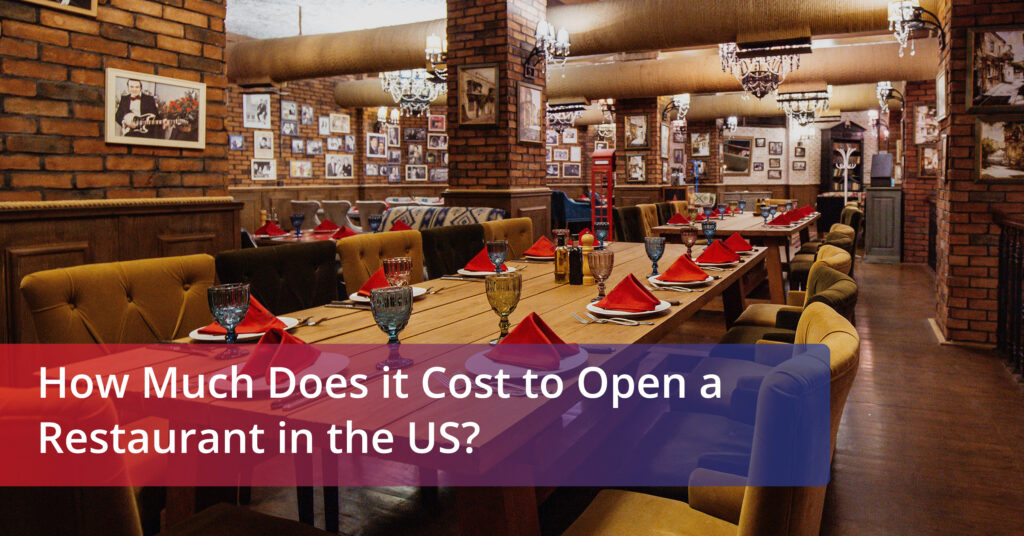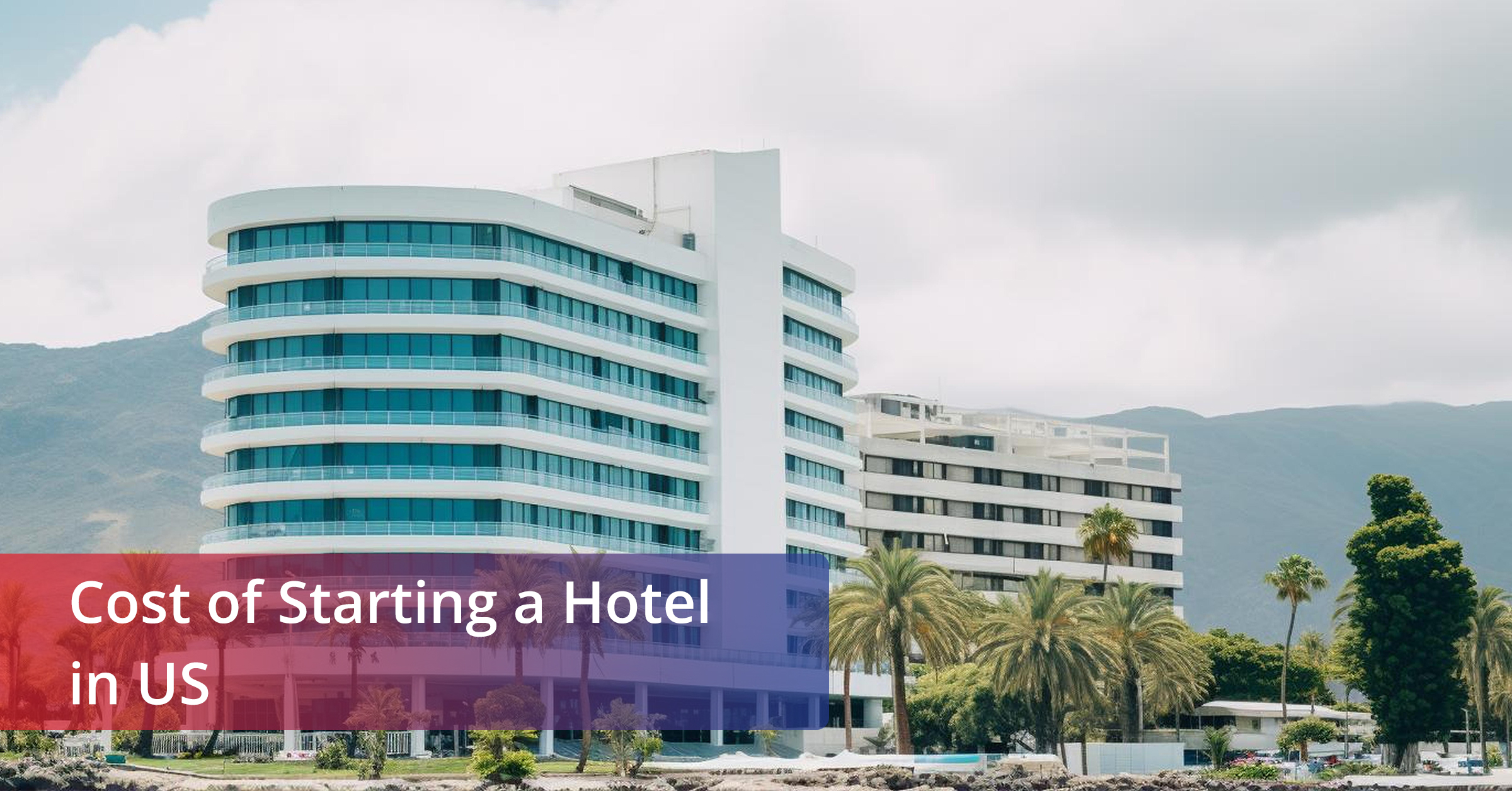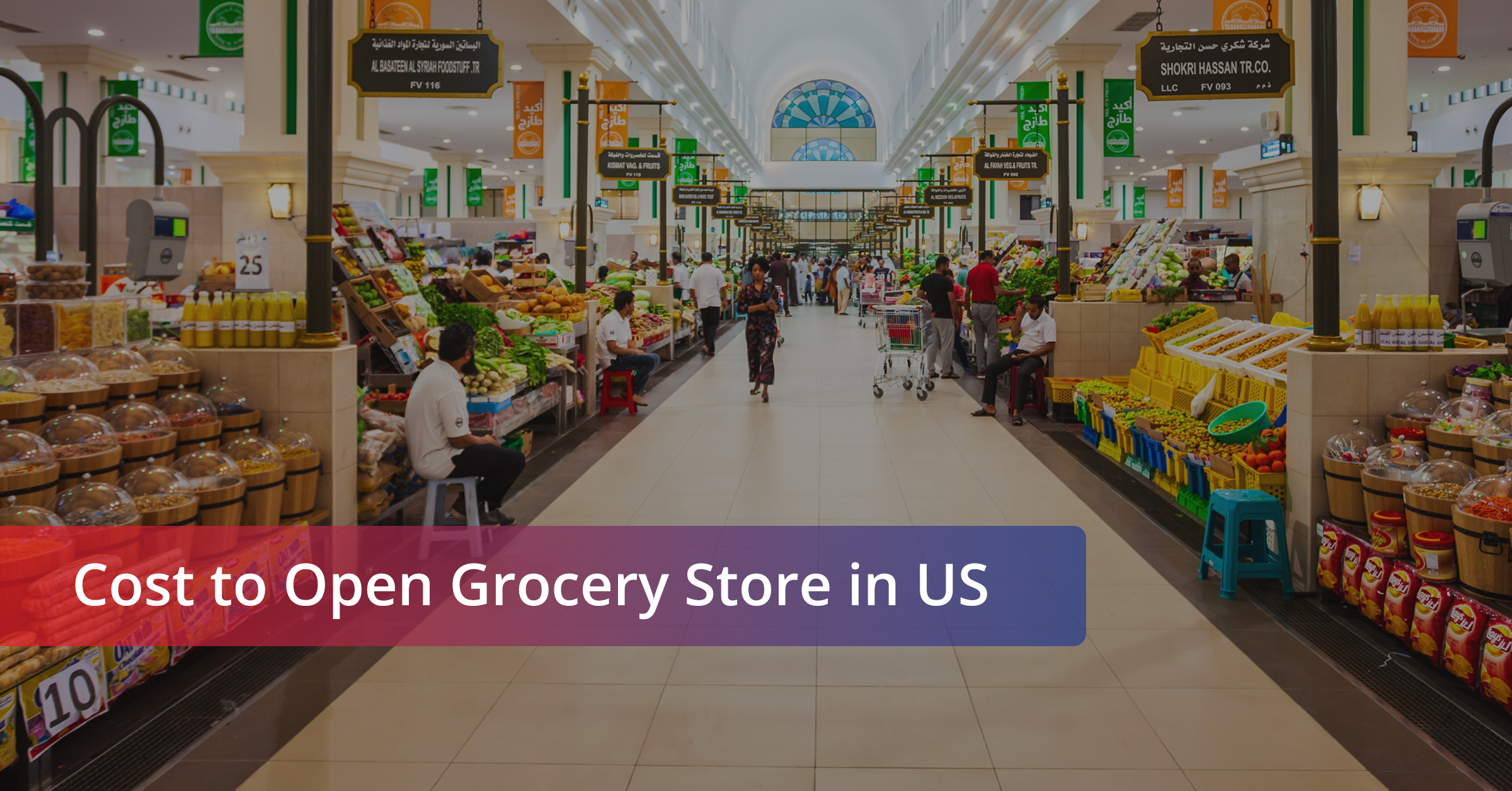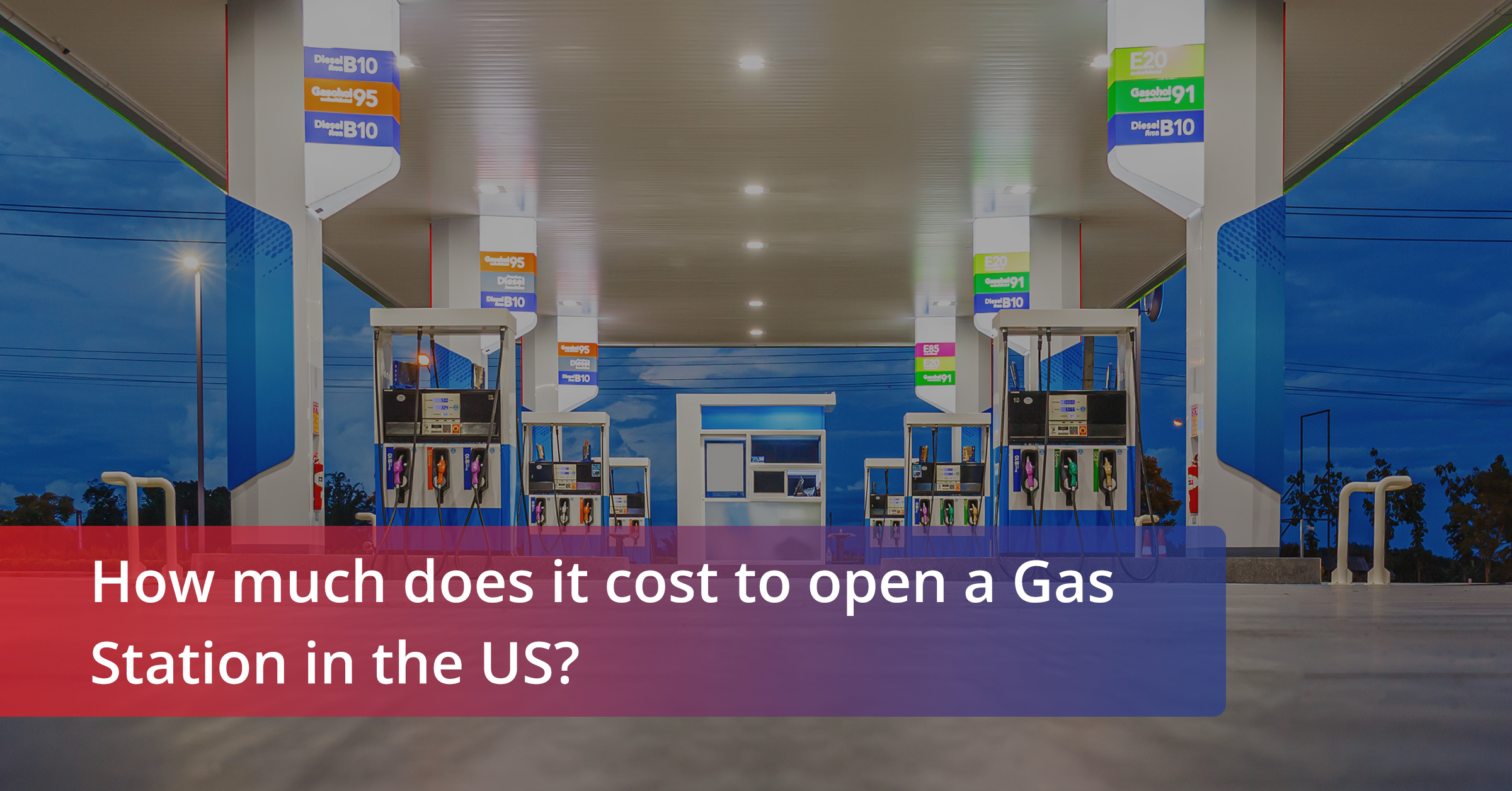Are you planning to launch a restaurant startup? Are you wondering how to open a restaurant? Making well-informed decisions before diving into the restaurant business is important.
A survey by Restaurant Owner found that the cost to open a restaurant ranges between $175,500 and $750,500. That’s a lot of money! But how do you know exactly how much you need?
It all comes down to careful planning. When it comes to restaurant business, profits are slim, costs are high, and competition is fierce. It is wise to estimate your startup and ongoing expenses before applying for loans or financial help.
Whether it’s a little sandwich shop or an upscale place where reservations are a must, once you have these estimates, you’ll have a good idea of what it takes to open and run a restaurant startup. Let’s get started!
Startup Cost to open a Restaurant
When it comes to the cost to open a restaurant, understanding the difference between restaurant expenses and costs is important. Restaurant expenses are recurring payments.
These include rent, food costs, payroll, marketing, and utilities. On the other hand, restaurant costs refer to one-time expenses (kitchen equipment, dishes, or furniture). Let’s break down the essential aspects of restaurant startup costs:
Factor | Min Cost | Max Cost |
|---|---|---|
Commercial Space | Depends on the Location (In LA rent could be $2.95 per square foot) | |
Renovations and Decor | $5,000 | $50,000 |
Restaurant Exterior Design | $1,000 | $40,000 |
Kitchen Appliances and Equipment | $50,000 | $150,000 |
Restaurant Technology | $1,500 | $5,000 |
Licenses and Permits | $5,000 | $50,000 |
Pre-Operating Expenses | $20,000 | $120,000 |
Marketing and PR | 3-6% of Total Sales | |
Restaurant Capital and Business Loans | $20,000 | $250,000 |
Total | $175,500 | $750,500 |
Commercial Space
The location of your restaurant is a long-term decision impacting visibility and marketing reliance. You can either lease or buy commercial space for your restaurant. Leasing requires a deposit (3-6 months’ rent), while buying needs a 15-35% down payment. Example: In downtown Los Angeles, rent could be $2.95 per square foot.
Renovations and Decor
Renovation costs vary based on your restaurant’s concept and the condition of the space. Focus on essential elements like seating, lighting, bar, and kitchen service area. Renovation costs can range from $5,000 to $50,000 or more.
Invest in the exterior appearance, including lighting, music, landscaping, and outdoor dining space. Signage serves as a marketing and promotional strategy. The price range for restaurant exterior design is around $1,000 to $40,000.
Kitchen Appliances and Equipment
Essential items include ovens, stoves, fridges, freezers, dishwashers, and more. It is smart to differentiate between essential and non-essential equipment, considering the needs of your staff and the overall dining experience.
On average, expect to spend around $115,655 for kitchen and bar equipment.
Restaurant Technology
Modern restaurants require technology for efficient operations. Start with essential software like-
- Point of Sale (POS) system
- Kitchen Display System (KDS)
- Employee scheduling software
- Reservation tools
- Loyalty program software
Budget around $1,000 for new hardware and set aside approximately $400 per month for software licenses.
Licenses and Permits
An important aspect of a restaurant’s cost is having the necessary licenses and permits to operate legally. Costs can vary; for example
- Food service license ($100-$1,000)
- Liquor license ($3,000-$400,000)
- Food handler’s permit ($100-$500)
Consider other permits like business, occupancy, and health permits. To form a business entity, you have to pay franchise taxes ($800-$1,000) and legal fees ($1,000-$5,000).
Pre-Operating Expenses
Invest in training programs for staff to ensure well-stocked inventory. Inventory covers not only food but also plates, cups, drinks, napkins, etc. Price range: $20,000 to $120,000.
Marketing and PR
Budget for website creation, logo design, social media management, and customer review responses. Explore affordable options like social media and digital strategies. Costs depend on the restaurant type, ranging from high-end to franchised.
Options include working with a marketing agency or managing social media independently. Marketing efforts may include email campaigns, social media, a website, merchandise, and branding. Budget: 3-6% of sales.
Restaurant Capital and Business Loans
Plan for gradual sales growth and apply for capital funding to cover the first six months of operation. Price range: $20,000 to $250,000 (or six months of operating costs).
Restaurant Fixed Expenses
The startup business does not end with these costs. You also have to be ready for fixed costs that remain relatively constant and include-
- Rent and Building Fees
- License Fees
- Insurance Coverage
- Ongoing Marketing
- Labor costs
- Stock up on food and supply inventory
- Professional Services (lawyers, consultants, architects, designers, accountants, and marketing/PR firms).
Restaurant Insurance: An Overlooked But An Important Aspect For an Opening Restaurant
A restaurant startup involves numerous responsibilities and obligations. While investors mostly focus on the aforementioned aspects of restaurant costs, one of the overlooked ones is acquiring a comprehensive insurance policy.
With a focus on customization, Restaurant Insurance ensures that your food business is well protected.
Importance of Obtaining a Restaurant Insurance
It’s important to have the right Insurance to protect your restaurant’s finances. A Restaurant Insurance Policy comes with comprehensive coverage options, such as
- Fire mishaps
- Theft
- Natural disasters
- Customer injuries
- Property damage.
Restaurant insurance can be tailored to your unique needs. Several factors that impact restaurant insurance rates are:
- Geographic location
- Size and seating capacity
- Alcohol service
- Safety measures
- Claims history
- Deductibles and coverage limits
- Potential savings opportunities
If your restaurant isn’t properly insured, you’ll have to pay for expensive incidents from your own wallet or revenue. Therefore, when it comes to opening a restaurant, having proper Insurance is important. Exceed Insurance, a top-rated option, offers comprehensive coverage for various aspects of your business.
How Exceed Insurance Can Help?
Exceed Restaurant Insurance offers peace of mind and financial protection in unexpected situations. It focuses on property protection, general liability, and specialized coverages like liquor liability and foodborne illness.
Conclusion
Before launching a Restaurant startup, carefully calculate the total capital you have available. Identify the specific areas within your restaurant where you feel most comfortable allocating this budget.
While your actual cost of starting a restaurant might differ, having a well-structured budget and business plan in place is essential. This approach establishes a solid foundation and serves as a guide for each decision you make during the restaurant’s opening process.
FAQs
While the cost to open a resturant can vary, it often requires a significant amount of capital. Most individuals may not have the funds saved. This led them to explore external funding options. Securing financing or loans can be helpful in achieving your restaurant dream.
If you lack the personal funds needed, there are several avenues to explore:
- Seek support from friends and family
- Consider applying for a small business loan through the U.S. Small Business Administration (SBA).
- Bring on a business partner who can contribute both financially and with expertise.
- Look for local investors who share an interest in supporting restaurants.
Make the restaurant startup costs checklist to plan and budget for key investments. Consider expenses such as commercial space, renovations, kitchen supplies, technology, licenses, marketing, Insurance, labor, rent, food, and utilities. Assign a budget for each category based on your specific needs.










